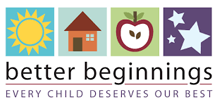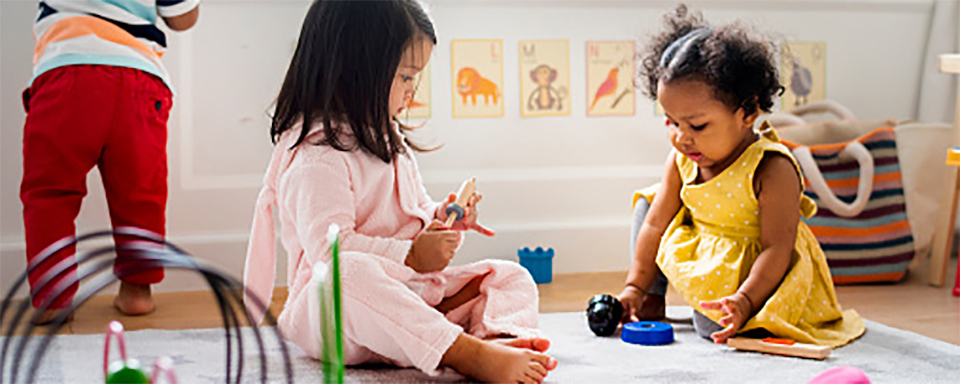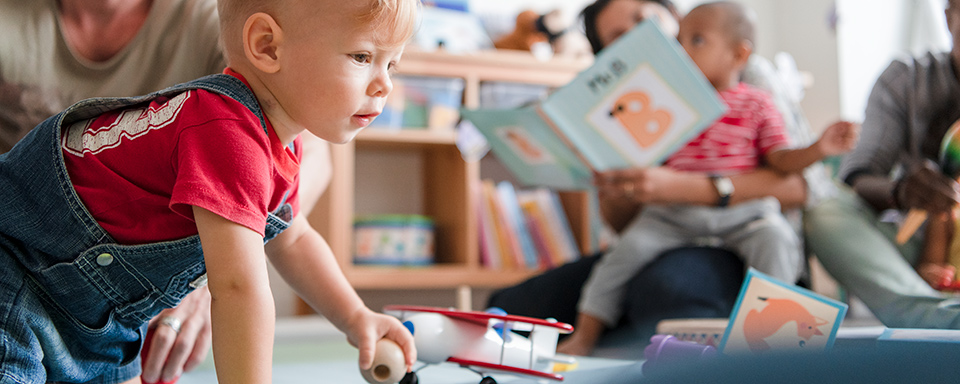Introduce your child to numbers and counting.
Focus on Kindergarten Readiness Indicators
- Says numbers in order up to 20
- Counts objects using one number for each object
- Recognizes four objects in a group without counting
- Recognizes numerals 1-10
- Uses number and letter-like forms or drawings to represent ideas or feelings
Activities by week
WEEK 1
Collect a variety of materials your child can use for counting and for learning about numbers.
- Items found around the house
- Bottle caps from milk jugs
- Plastic measuring cups and spoons
- Catalogs and magazines with pictures
- Old keys
- Margarine tubs
- Plastic lids
- Thread spools
- Purchased items
- Pegs and peg boards
- Colored counting cubes
- Plastic links
- Dominos
- Counting bears
WEEK 2
Use number words and point out numerals as you and your child do things together.
- In the kitchen
- “On this package of rice it says to add 2 cups of water.”
- “I need you to put 3 forks and 3 plates on the table.”
- Folding laundry
- “These 3 shirts are for Granddad.”
- “Fold these 4 washcloths and put them in the bathroom.”
- Grocery shopping
- “That sign says bananas are 49¢ a pound.”
- “Pick out 4 apples and put them in this bag.”
- At play
- “See how many scoops of sand it takes to fill that margarine tub.”
- “Can you put 5 counting bears in a row?”
WEEK 3
Involve your child in number and counting activities.
- Listen as your child counts from one to however high they can count.
- Play Simon says. Say to your child, “Simon says clap your hands five times.” “Simon says take three steps forward.” Let your child have a turn being Simon.
- Play counting games, such as “How many doorknobs can you find in this room?” and “How many legs are on the kitchen table?”
- Make number cards. Write the numerals 1, 2, 3, 4, and 5, one numeral per card on index cards. Ask your child to place the correct number of bottle caps on each card.
WEEK 4
Ignite your child’s thinking skills.
- Find items around the house for your child to measure with. Offer a variety of items, such as yarn or a ruler.
- Use language such as longest, tallest, or shortest.
- Read children’s books that explore math concepts, such as shapes, counting, and number recognition.
Additional Ideas
Play “I Spy Numbers” with your child.
Begin at home. Ask your child to look for numbers in your home. Your child may see numbers on the cell phone, on a clock, on the mailbox or house, on your computer’s keyboard, and in sale papers.
Play “I Spy Numbers” as you and your child go places by car or take a walk in the neighborhood. Your child may see numbers on license plates, mailboxes, house numbers, and signs with gasoline prices.
The possibilities are endless.
Special Activity
Help your child make a number book.
Staple or tie together with yarn six plain sheets of paper.
Write “My Number Book” on the cover page. Write or have your child write their name and draw pictures on the cover page.
Write one numeral from 1 to 5 on each page.
Let your child put the correct number of stickers or paste cut-out magazine pictures on each page.
Add pages to the book as your child learns numbers beyond 5.
Suggested Books to Read with Your Child
Count by Denise Fleming
Fish Eyes – A Book You Can Count On by Lois Ehlert
Mouse Count by Ellen Stohl Walsh
Ten, Nine, Eight by Molly Bang
Pete the Cat and His Four Groovy Buttons by Eric Litwin







